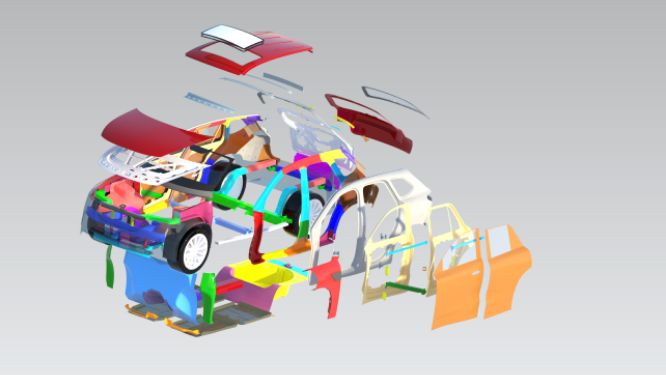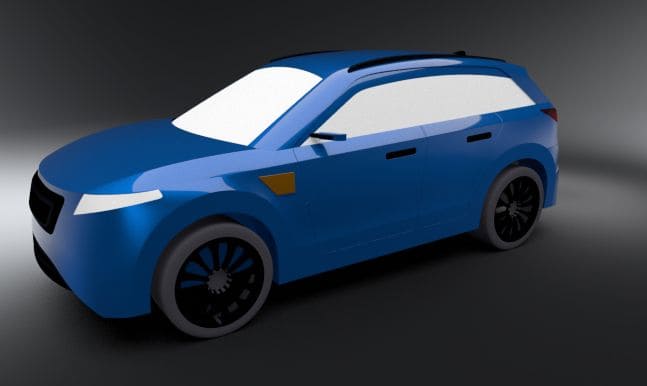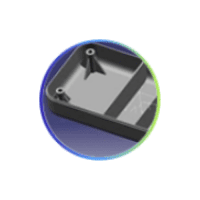Courses by Software
Courses by Semester
Courses by Domain
Tool-focused Courses
Machine learning
POPULAR COURSES
Success Stories
Project on Concrete Mix Design for various grades of Concrete
Calculate the Concrete Mix Design for M35 grade concrete with fly ash AIM: To calculate the Concrete Mix Design for M35 grade Concrete with fly ash EQUATIONS: Target mean strength : f’ck= fck +1.65 s …
MUNAGALA NARESH
updated on 16 Oct 2022
Calculate the Concrete Mix Design for M35 grade concrete with fly ash
AIM:
To calculate the Concrete Mix Design for M35 grade Concrete with fly ash
EQUATIONS:
- Target mean strength : f’ck= fck +1.65 s
f’ck = target mean strength
fck= compressive strength at 28 days of concrete
s = standard deviation ( IS 10262:2009 , table -1)
- Volume of cement : (mass of cement /specfic gravity of cement )x1 /1000
- Volume of water : ( mass of water /specific gravity of water ) x1 /1000
- Volume of chemical admixtures : ( mass of chemical admixture / specific gravity of chemical admixture )x 1/1000
- Volume of fly ash : (mass of fly ash/specific gravity of fly ash )x 1/1000
- Volume of concrete: 1 m^3
- Volume of aggregates : ( volume of concrete -( volume of cement +volume of fly ash + volume of water + volume of admixture )
- Mass of coarse aggregates: volume of aggregate x volume of coarse aggregate x specific gravity of coarse aggregate x1000
- Mass of fine aggregate : volume of aggregate x volume of fine aggregate x specific gravity of fine aggregate x1000
CODES FOR CONCRETE MIX DESIGN:
- IS 10262: 2009
- IS 456: 2000
- IS 8112
- IS 9103
- IS 3812 ( part 1)
OBJECTIVES:
- The main objective is to produce concrete as economically as possible
- To achieve desired workability, durability and minimum strength of M35 grade concrete
PROCEDURE AND CALCULATION:
- TARGET MEAN STRENGTH
F’ck = fck + 1.65 5
fck= 35 N/mm^2 (M35 )
Table 1- IS 10262:2009

s = 5 N/mm^2
f ‘ck = 35 + ( 1.65 x 5)
= 43.25 N/mm^2
2. SELECTION OF WATER CEMENT RATIO :
Given :
M35
Assume:
Exposure condition : Extreme ( for reinforced concrete)
Table 5 – IS 456 : 2000
Therefore,
Extreme= w/c ratio= 0.40
M35 = w/c ratio= 0.45
Lower the water cement ratio better the workability
0.40 < 0.45
Water cement ratio = 0.40
Minimum cement content = 360 kg/m^3

3. SELECTION OF WATER CONTENT
Assume :
Nominal size of aggregates= 20 mm
Table 2 -IS 10262: 2009

Minimum water content = 186 litres or kg
Slump ranges from 25 to 50 mm
As superplasticizers (20 % reduced)
= 186 x 80/100 = 148.8 (100-20 = 80)
Water content = 149 litres
4. CALCULATION OF CEMETITIOUS CONTENT ( CEMENT + FLY ASH)
Water cement ratio = w/c= 0.40
Water content = W = 149 kg
Cementitious content = c=149/0.40 = 372.5 = 370 kg/m^3
Minimum cement content = 360 kg/m^3
360< 370 kg/m^3 ( hence okay )
Increase by 10 %
370 x 0.10 + 370 = 407 kg/m^3
W= 149 kg
Water cement ratio = 149/407 = 0.366
Fly ash at 30 % total cementitious material content
= 407 x 30/100 = 122 kg/m^3
Cement (ordinary Portland cement ) = 407-122 = 285 kg/m^3
Saving of cement while using fly ash = 370 – 285 = 85 kg/ m^3
Fly ash = 122 kg/m^3
5.VOLUME OF COARSE AGGREGATES AND FINE AGGREGATES
Fine aggregates are sieved according to zone 1 of table 4 IS 383
Coarse aggregates are sieved according to table 2 IS 383
According ,
Table 3 IS 10262: 2009
Nominal size of aggregates = 20 mm
Fine aggregates ( zone 1)
Therefore ,
Volume of coarse aggregate = 0.60

Water cement ratio = 0.4
( +/- 0.01 for every +/- 0.005)
So, volume of coarse aggregate = 0.62
Volume of fine aggregate = 1-0.62 = 0.38
6.MIX CALCULATION :
- Volume of concrete = 1m^3
- Volume of cement = (285 / 3.15) x1/1000= 0.090 m^3
- Volume of fly ash = ( 122/2.2) x1/1000=0.055 m^3
- Volume of water = ( 149/1)x 1/1000=0.149 m^3
- Volume of admixture = ( 7.6/ 1.145)x1/1000=0.006 m^3
- Volume of coarse aggregate and fine aggregate = a – ( b + c + d+
e) = 1-( 0.090 + 0.055 +0.149+ 0.006 )= 0.7 m^3 - Mass of coarse aggregate = 0.7 x 0.62 x 2.74 x1000 = 1189.16 kg/m^3
- Mass of fine aggregate = 0.7 x 0.38 x 2.74 x1000 = 728 kg/m^3
RESULTS AND CONCLUSION :
TRIAL MIX:
Cement = 285 kg/m^3
Fly ash = 122 kg/m^3
Water = 149 kg
Coarse aggregate = 1189 kg/m^3
Fine aggregate = 728 kg/m^3
Chemical admixture = 7.6 kg/m^3
Water cement ratio = 0.366
Trial mix ratio : 285 :728 : 1189 = 1: 2.55 : 4.17 ( C: FA: CA)
- This trial mix ratio should match the workability ,durability, minimum strength of M35 grade concrete .
- If it does not satisfy the above criteria two or more trials for increase of 10 % should be done .
AIM:
To calculate M50 grade without fly ash
EQUATIONS:
- Target mean strength : f’ck= fck +1.65 s
f’ck = target mean strength
fck= compressive strength at 28 days of concrete
s = standard deviation ( IS 10262:2009 , table -1)
- Volume of cement : (mass of cement /specific gravity of cement )x1/1000
- Volume of water : ( mass of water/specific gravity of water ) x1 /1000
- Volume of chemical admixtures : ( mass of chemical admixture/ specific gravity of chemical admixture )x 1/1000
- Volume of concrete: 1 m^3
- Volume of aggregates : ( volume of concrete -( volume of cement + volume of water+volume of chemical admixture) )
- Mass of coarse aggregates: volume of aggregate x volume of coarse aggregate x specific gravity of coarse aggregate x1000
- Mass of fine aggregate : volume of aggregate x volume of fine aggregate x specific gravity of fine aggregate x1000
CODES FOR CONCRETE MIX DESIGN:
- IS 10262: 2009
- IS 456: 2000
- IS 8112
- IS 9103
- IS 3812 ( part 1)
OBJECTIVES:
- The main objective is to produce concrete as economically as possible
- To achieve desired workability, durability and minimum strength of M 50 grade concrete
PROCEDURE AND CALCULATION:
- TARGET MEAN STRENGTH
F’ck = fck + 1.65 5
fck= 50 N/mm^2 (M50 )
Table 1- IS 10262:2009

s = 5 N/mm^2
f ‘ck = 50 + ( 1.65 x 5)
= 58.25 N/mm^2
2. SELECTION OF WATER CEMENT RATIO :
Given :
M50
Assume:
Exposure condition : Extreme ( for reinforced concrete)
Table 5 – IS 456 : 2000
Therefore,
Extreme= w/c ratio= 0.40
M50 = w/c ratio= 0.40
Lower the water cement ratio better the workability
0.40
Water cement ratio = 0.40
Minimum cement content = 360 kg/m^3

3. SELECTION OF WATER CONTENT
Assume :
Nominal size of aggregates= 20 mm
Table 2 -IS 10262: 2009

Minimum water content = 186 litres or kg
Slump ranges from 25 to 50 mm
As superplasticizers (20 % reduced)
= 186 x 80/100 = 148.8 (100-20 = 80)
Water content = 149 litres
4.CALCULATION OF CEMENT CONTENT
Water cement ratio = w/c= 0.40
Water content = W = 149 kg
Cement content = c=149/0.40 = 372.5 = 373 kg/m^3
Minimum cement content = 360 kg/m^3
360< 373 kg/m^3 ( hence okay )
5.VOLUME OF COARSE AGGREGATES AND FINE AGGREGATES
Fine aggregates are sieved according to zone 1 of table 4 IS 383
Coarse aggregates are sieved according to table 2 IS 383
According ,
Table 3 IS 10262: 2009
Nominal size of aggregates = 20 mm
Fine aggregates ( zone 1)
Therefore ,
Volume of coarse aggregate = 0.60

Water cement ratio = 0.4
(+/- 0.01 for every +/- 0.005)
So, volume of coarse aggregate = 0.62
Volume of fine aggregate = 1-0.62 = 0.38
6.MIX CALCULATION :
- Volume of concrete = 1m^3
- Volume of cement = (373/3.15)x1/1000 = 0.118 m^3
- Volume of water = ( 149/1)x1/1000= 0.149 m^3
- Volume of admixture = ( 7.6/1.145)x1/1000 = 0.006
- Volume of coarse aggregate and fine aggregate = a – ( b + c + d) = 1-( 0.118 + 0.149 + 0.006 )= 0.727 m^3
- Mass of coarse aggregate = 0.727 x 0.62 x 2.74 x1000 = 1235.02 kg/m^3
- Mass of fine aggregate = 0.727 x 0.38 x 2.74 x1000 = 756.9 kg/m^3
RESULTS AND CONCLUSION :
TRIAL MIX:
Cement = 373 kg/m^3
Water = 149 kg
Coarse aggregate = 1235.02 kg/m^3
Fine aggregate = 756.9 kg/m^3
Chemical admixture = 7.6 kg/m^3
Water cement ratio = 0.40
Trial mix ratio : 373 :756.9 : 1235.02 = 1: 2.02: 3.31 ( C: FA: CA)
- This trial mix ratio should match the workability ,durability, minimum strength of M50 grade concrete .
- If it does not satisfy the above criteria two or more trials for increase of 10 % should be done .
Leave a comment
Thanks for choosing to leave a comment. Please keep in mind that all the comments are moderated as per our comment policy, and your email will not be published for privacy reasons. Please leave a personal & meaningful conversation.
Other comments...
Be the first to add a comment
Read more Projects by MUNAGALA NARESH (45)
To Design slab and foundation for an RC residential building using TSD
1.Design the slab and foundation of the model. Outline the thought process for designing of the elements (column, beam, slab and foundations)Aim - To design the slab and foundation of the model.Tools Used - 1st Order analysis, Analysis all ( static ), Status , check panel ,Properties window etc. Procedure -Open the…
03 Aug 2024 01:47 PM IST
Project 2_Analyze and Design the RC office building as per IS standard code in TEKLA STRUCTURAL DESIGNER
Develop general arrangement for the RC office building. Analyze and design the building as per IS standard code in TEKLA STRUCTURAL DESIGNER. Refer the attached plan and elevation. The building to be designed for dead, live, wind and seismic loading.Report of each member to be generated and extract drawings for structural…
03 Aug 2024 01:46 PM IST
To Generate report for Steel Industrial and RC structures using TSD
) Generate report for the steel building design from challenges 1 – 6 along with the loading summary AIM : To Generate report for the steel building design from challenges 1 – 6 along with the loading summary INTRODUCTION : Open the model.If needed, number the model. ...On the Drawings & reports…
03 Aug 2024 01:40 PM IST
To Generate seismic loading based on IS code and to run the analysis using TSD
1. Generate seismic loading based IS codal provisions and zone II. Any other data you can assume and input accordingly. AIM: To generate seismic loading based IS codal provisions and zone II. INTRODUCTION:Seismic load indicates how much seismic energy (waves of energy that travel through the earth) a…
14 Jul 2024 05:57 AM IST
Related Courses





Skill-Lync offers industry relevant advanced engineering courses for engineering students by partnering with industry experts.
Our Company
4th Floor, BLOCK-B, Velachery - Tambaram Main Rd, Ram Nagar South, Madipakkam, Chennai, Tamil Nadu 600042.
Top Individual Courses
Top PG Programs
Skill-Lync Plus
Trending Blogs
© 2025 Skill-Lync Inc. All Rights Reserved.









